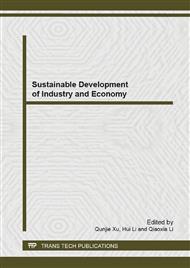p.1085
p.1091
p.1096
p.1106
p.1112
p.1117
p.1121
p.1128
p.1133
Compartmental Analysis of Agent-Based Population Migration for Regional Spatial Structure
Abstract:
In this note we show how the compartmental approach can be used as a tool to analyze rural-urban migration with heterogeneity of the multi-agents and introduce it into the dynamic models for regional spatial structure. The analysis suggests that compartmental approach would permit us to build a model described by a completely deterministic system of dynamic equation and to use more simple mathematical instruments.
Info:
Periodical:
Pages:
1112-1116
Citation:
Online since:
December 2013
Authors:
Price:
Сopyright:
© 2014 Trans Tech Publications Ltd. All Rights Reserved
Share:
Citation:


